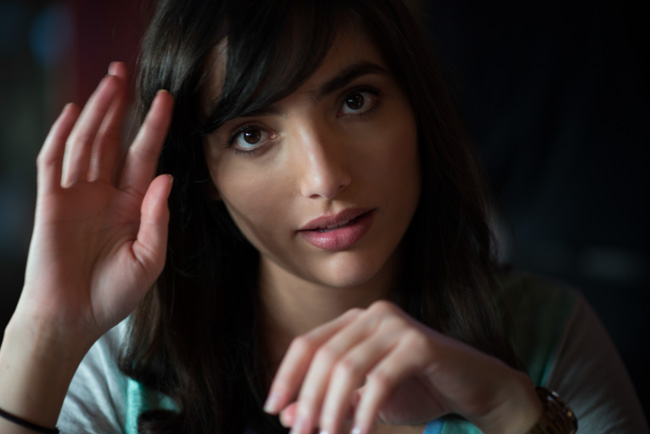

In the days before digital, things were a bit more standardized. You could get SLRs and point & shoots and rangefinders of all shapes and sizes, and they’d all essentially be bringing the same ammunition since they were all making an image on the space of the same size: 35mm film. The differences really came down to your glass, and little bits of engineering here and there in the camera body. It’s not quite the same now with digital. It wasn’t until recently that the digital sensor equivalent of 35mm film could be fit into a small and compact body. Sony’s RX1 was indeed a breakthrough.
[REWIND: Nikon D610 Review | To Get Or Not To Get, Is Still The Question]
However unlike film as hinted above, a full frame sensor isn’t all there is to making good images in digital. The sheer number of things that affect your image quality can be mind boggling; from sensor sizes, to filters on those sensors, to individual sensor characteristic, to the processor, to how well the EVF or viewfinder displays colors and gives you the right idea of what you’re shooting, and the list goes on until you can add them all up and build it into the camera’s IQ and personality. So even though Sony managed to be masters of form, there was no guarantee it would be anything but vapid inside. It’s not. It’s anything but. This is not an RX100 in a party frock. The RX1R may be the most surprising camera I’ve ever used – good and bad.
In the review to come, I’ll dive into the details of this remarkable camera and discuss its strengths, weaknesses, and if it has enough self validation to warrant the price.
Initial Thoughts
If you’ve wandered into a Sony store over the past year or so, you’d have no doubt run into the RX1. It was probably sitting alone like the nice rich kid at school, misunderstood, and a bit intimidating due to its $2800 price tag. It would likely be sitting next to the a99, a full fledged DSLR, and for the same price. In fact, if you’re like me, the main reason you went over to look at it would be to see how they could justify that cost. After all, it’s tiny, it has a fixed focal length, and not great ergonomics to speak of right? More on that to come.

The first thing you’d notice is it’s a handsome little camera. It looks like what I imagine an RX100 would look like roided up. Sort of in a Vin Deisel sort of way – big, but still small. There’s nothing really organic about it. It looks almost clinical, like Sony cameras tend to. When I look at it, I think of a lab and a microscope. There’s a fit and finish to it that’s really second to very elite company such as Leica.
The next thing you’d notice once you pick it up is that it’s heavy. Surprisingly so. If you ever were handed a bottle of mercury in science class (maybe showing my age right now) and had that sensation of shock because your body and mind hadn’t anticipated it being so heavy, it’s much the same sensation. But it’s a good thing. This camera feels solid. In fact, it feels as if it was machined out of a block of solid steel and stone. It feels wonderful. Comparitively, the Fuji X100s feels like a plastic toy. This isn’t surprising as that gorgeous Zeiss Sonnar 35mm f/2 lens is a little beast. It actually extends quite far into the body though you wouldn’t know. It makes me wonder just how they manage to have it and fit the full frame sensor as well. Impressive. Also unlike the X100s, no one will care that you have this. No one will notice, and no one will want to see it. It doesn’t have the same visual appeal, and most will dismiss it as a basic point and shoot. How wrong they would be.
Sample Shots
I haven’t been shooting with this too much, though I will in the weeks to come. Already, I can tell you that it has AF issues. It’s contrast detection, which surprises me given the cost. Sure the lens is bright, but it still does some hunting. Nothing horrible, but still noticeable. You can brighten up the LCD via upping the ISO and that seems to help the AF out, much like on the Fujis. You may as well bump up the ISO because it’s so damn brilliant. I have shot this thing at 10,000 ISO as a joke, and had to silently rethink all I knew of the camera because it rendered so well in RAW and JPEG. Actually, this handles noise and high ISO better than any camera I have ever used. Here are just a few shots right out the box with much more to come soon.





Lastly
I’m very torn at this point with my time with the RX1R. I don’t want to give too much away, but I can confidently say that the quality of images that comes out of this camera, especially the R without the anti-aliasing filter, rivals the best DSLRs on the market. That’s not a typo. As an urban shooter, it seems great, and it’s also a serious shooter. The problem is it seems to be a camera that was trying to fit into two worlds and as such, doesn’t fit perfectly into either. But I’m slowly beginning to really really like it, and I’ll explain in the full review just why this is still relevant, and why it truly is one of the most interesting cameras I’ve ever used.





Get Connected!